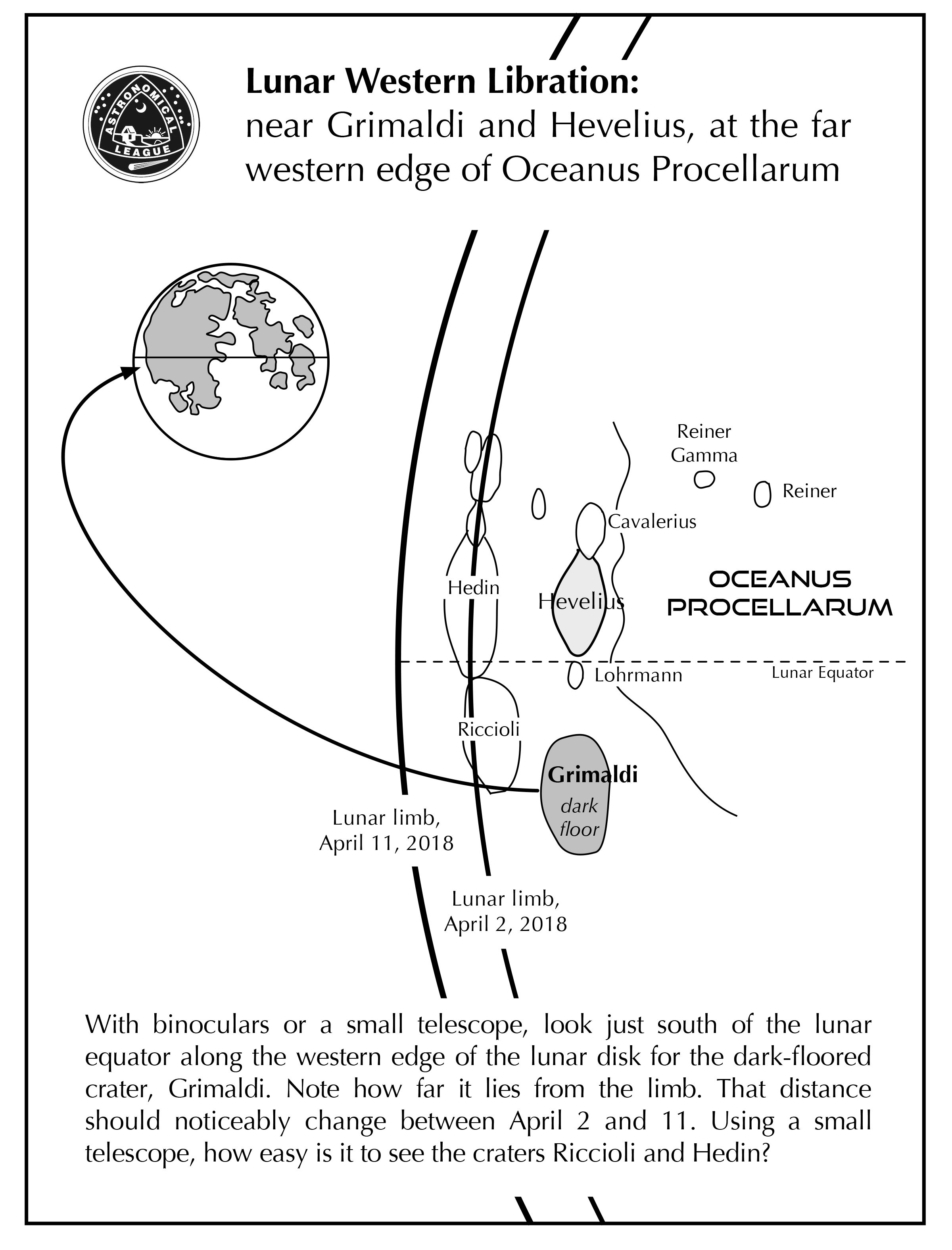Casual skywatchers since the time of the ancient Greeks have seen the rising moon as appearing much larger than after it has climbed higher in the sky. The moon is often portrayed in film and television as being very large and bright when it is near the horizon. All this flies in the face of the fact that the actual apparent size of the moon, whether it is rising or it is at its highest point in the sky is quite small. Extend your arm and outstretch your hand. The moon’s apparent diameter is about 1/4 the width of your index finger.
The common explanation of the “Big Moon” illusion is that when the moon’s apparent size is compared to familiar landscape objects, such as distant houses and trees, our mind interprets the moon as being quite large. However, when it moves higher in the sky, there are no nearby comparison objects. The moon’s apparent size then appears to shrink, and it seems to lie much farther away. While sounding plausible, this reasoning does not explain why the same effect occurs at the beach when the moon is seen hovering just above a flat, featureless ocean horizon, or in the desert when the moon is cast against sweeping sand formations. Studies have sought a deeper psychological explanation.
See the big moon illusion for yourself on the evening just after March’s full moon, April 1, or on the next full moon of April 29. From a location that has a low horizon line, look to the east at sunset for the rising moon, or, on the following morning, to the west at sunrise.
1. Isolate the moon by viewing it through a narrow tube, such as a drinking straw. Note its size compared to the tube’s field of view. Wait two hours or more and repeat the observation.
2. Use a digital camera at full optical zoom and take an image of the rising moon. Be sure the camera is properly focused and that the image is not overexposed. Again, wait a couple of hours, then take another image. Download both images on a computer and view them at the same image scale.
Are the moon sizes the same?
Compare the size difference between moon at apogee and perigee
A direct comparison between the apparent sizes of the moon when it is near perigee (the moon’s closest point to Earth) and when it reaches apogee (the moon’s farthest point) can be made. Apogee occurs on April 8 when the moon reaches 3rd quarter and, doesn’t rise before midnight. Simply take a digital photo of the moon on either the 7th, 8th, or 9th, perhaps shortly before sunrise. Take another image on the night of perigee, April 20th, or the night before or after. Use the camera’s full optical zoom feature, and make sure the lens is properly focused. (Try using a manual focus set on infinity.) Be careful not to overexpose the images.
Directly compare the apogee and perigee moon sizes on a computer using the same image scale. The April 8 image will be found to be about 10% smaller than either the April 20 image.
Discover lunar libration, seeing the far side of the moon
One interesting consequence of the moon’s elliptical orbit is the phenomenon known as libration. The moon presents the same hemisphere toward Earth as it orbits our planet. Therefore, we always see its same side; we never see its far side. Strangely though, during each month, we are able to observe about 59% of the lunar surface.
The moon traces an elliptical path around Earth. One of the features of a body moving in an elliptical orbit is that, when it is nearer to the parent body, it moves faster, and when it is farther, it moves slower. Therefore, the moon moves slowest at apogee and fastest at perigee. All the while, the moon rotates at a constant rate, completing one full rotation every lunar orbit. As a result of these two factors – the changing speed of the moon in its orbital path and its constant rotational rate — plus the changing curvature of its elliptical path, observers on Earth are able, at times, to see slightly around the western limb of the moon, and, at other times, to see slightly around the eastern limb. This is an east-west libration.
There is also a north-south component, because, at times, the moon is either slightly above or below the ecliptic, permitting observers on Earth to see slightly over the moon’s south or north polar regions, respectively.
Activity for binoculars or small telescope: Observe the crater Grimaldi near the moon’s western edge. It has a dark floor, making for easy identification. Photograph it using a digital camera at full optical zoom. Be sure to focus the camera and be careful not to overexpose the image. Do this on April 2, or 3 – a few days after full moon – and do so again on April 10 or 11. Download the two images on a computer displaying the same image scale. Closely examine the amount of lunar surface between the western edge to Grimaldi. The April 2 image should show less distance than the April 11 image.

The Moon plows through the Hyades
From April 18, 23:00 UT to April 19, 7:00 UT, the crescent moon moves in front of the Hyades star cluster.
Observe the event through binoculars, and capture it with a digital camera. Note the time for each photo. As the minutes pass, the dark edge of the moon slowly moves in front of different stars, blocking them from view. Other stars pop out the moon’s brightly lit crescent side. This demonstrates that, even though the moon appears to move westward in our sky, it also travels eastward in its orbit around our planet. It moves about one of its diameters every hour.
Solar Camera Obscura
Examine the sun by making a pin-hole camera. Punch a hole at one end of a shoe box with a small nail. Place a piece of white paper inside of the box at its other end. Face away from the sun, turn the box over, and hold it with the hole toward the sun. Look at the sun's small image projected on the paper.
If there are large sunspots, they should be discernible as small, darkened blots on the solar disk projected on the paper. (If possible, stand in a darkened room with the box held in sunlight. This should give better contrast.) Repeat this for a few days, and the sunspots will be seen to move across the solar disk, allowing an estimation of the sun’s rotational period.
Also note the uniformity of the sun’s brightness across its disk. The phenomenon of “limb darkening” should be observed.
Mars pairs with Saturn in the morning sky
The early morning sky features Mars and Saturn shining brightly in the south-southeast two hours before sunrise.
On April 1 and 2, red Mars nearly bumps into the slightly dimmer, creamy colored Saturn. A few mornings later, Mars lies just to the east of Saturn. Pull out binoculars and have a look at the planetary pair, especially after April 11 when the bright moon no longer interferes. There will be many star clusters and nebulae visible in the immediate area. On April 8, the third quarter moon sits just east of Mars and Saturn. (Note: Mars and Saturn won’t rise until after 2 a.m.)
Why is Mars, the second smallest planet, slightly brighter than Saturn, the second largest planet? Shouldn’t Saturn appear much brighter? Largely, this is due to the effect of distance. Mars’ diameter is 18 smaller than Saturn’s (and its apparent area of its planetary disk is over 300 times smaller) – but its distance is 9 times closer. This combined with its reflectivity being half that of Saturn’s results in Mars appearing slightly brighter in the April sky than Saturn. Even so, Mars is far dimmer than Jupiter, the largest of all planets. Mighty Jupiter shines brightly and steadily high in the south two hour before sunrise.
Viewing the solar system’s largest moon without optical aid
If the sky is dark and very clear, and if the observer has keen eyesight, the solar system’s largest moon, Jupiter’s Ganymede, can be spotted with the unaided eye.
To find Jupiter: the solar system’s largest planet shines very brightly 2 hours before sunrise in the south. It will be easily the brightest object in that part of the sky (except when the moon is in that area).
The brightness of Ganymede is approximately the same as one of the dimmer stars of the Little Dipper. If it weren’t for the overpowering glare from bright Jupiter, Ganymede could be seen in a dark sky by most people. Position yourself so that Jupiter is barely blocked by a dark building, hiding the glaring planet.
On the nights listed, with Jupiter blocked on the west side of the building, Ganymede will be glimpsed twinkling just west of the planet, about the same distance equalling 1/6 of the moon’s apparent diameter:
April 2
April 9
April 16
April 23
Blocking Jupiter on the east side of the building, Ganymede will be east of the bright planet on these nights:
April 6
April 13
April 20
April 27
The April 16 and 20 sightings will likely be the easiest to spot. Jupiter’s outermost large moon, Callisto, appears very close to Ganymede, adding its light to Ganymede’s.








